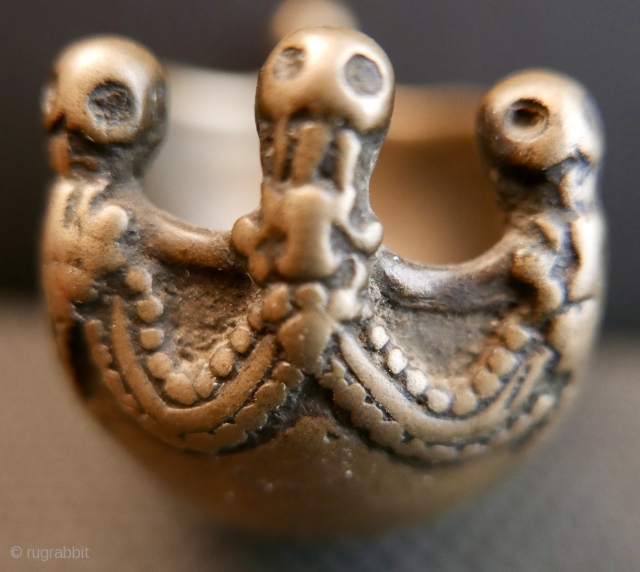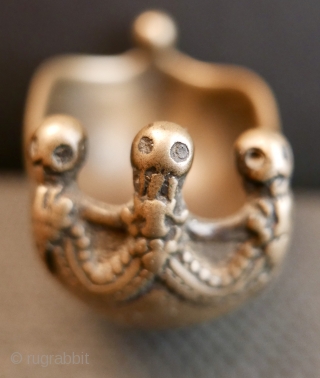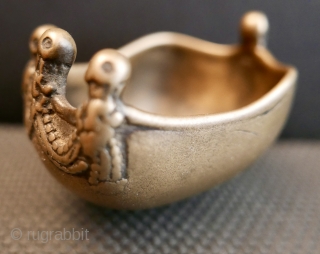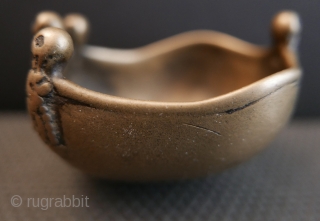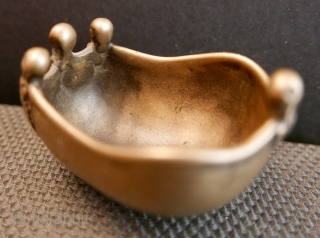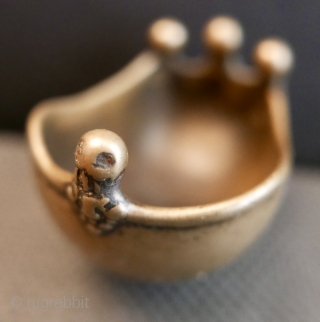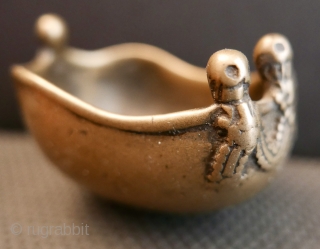Back
18th c tibetan buddhist "kapala" "Kapala" is a Sanskrit word meaning "skull". In Tibetan Buddhist monasteries "Kapalas' were used as bowls to hold dough cakes and wine representing blood and flesh as offerings to wrathful deities such as Dharmapala, the Defender of the Faith. And in esoteric rituals by tantrikas as an aide in achieving transcendental states. Traditionally, Kapalas were fashioned from human skulls gathered from charnel grounds. Thus, the shape of the piece here shown. Occasionally, though, Kapalas were created from other materials as in this example in brass. It is particularly rare because of its diminutive size...probably commissioned by a lama who traveled extensively and who could access it easily, along with his "Gau", while journeying between monasteries.
Acquired in a journey north of Leh, in Ladakh, n India late last century.
SOLD
price:
SOLD Thank you.
- Home
- Antique Rugs by Region
- Category
- Profiles
- Post Items Free
- Albums
- Benaki Museum of Islamic Art
- Budapest: Ottoman Carpets
- Gulbenkian Museum
- Islamic Carpets. Brooklyn
- Islamic Textiles. Brooklyn
- Konya Museum: Rugs
- MKG, Hamburg
- MMA: Caucasian Carpets
- MMA: Mamluk Carpets
- MMA: Mughal Indian Carpets
- MMA: Ottoman Carpets
- MMA: Safavid Persian Carpets
- MMA: Turkmen Rugs
- McCoy Jones Kilims
- Ottoman textiles. Met
- Philadelphia Museum
- Rugs and Carpets: Berlin
- Seljuqs at the Met
- TIEM, Istanbul: Carpets
- V&A: Classical Carpets
- Vakiflar Carpets: Istanbul
- Baluch Rugs: Indianapolis
- Gallery Exhibitions
- Jaf an Exhibition
- Alberto Levi Gallery
- Andean Textile
- Christie's London: 2016
- Francesca Galloway
- HALI at 40
- ICOC Washington, DC 2018
- Jajims of the Shahsavan
- London Islamic Week April, 2018
- Mongolian Felts
- Navajo Rugs: JB Moore
- Persian Piled Weavings
- SF Tribal & Textile Art Show 2020
- SF Tribal 2019
- Sotheby's: C. Alexander
- Turkish Prayer Rugs
- Turkmen Main Carpets ICOC 2007







